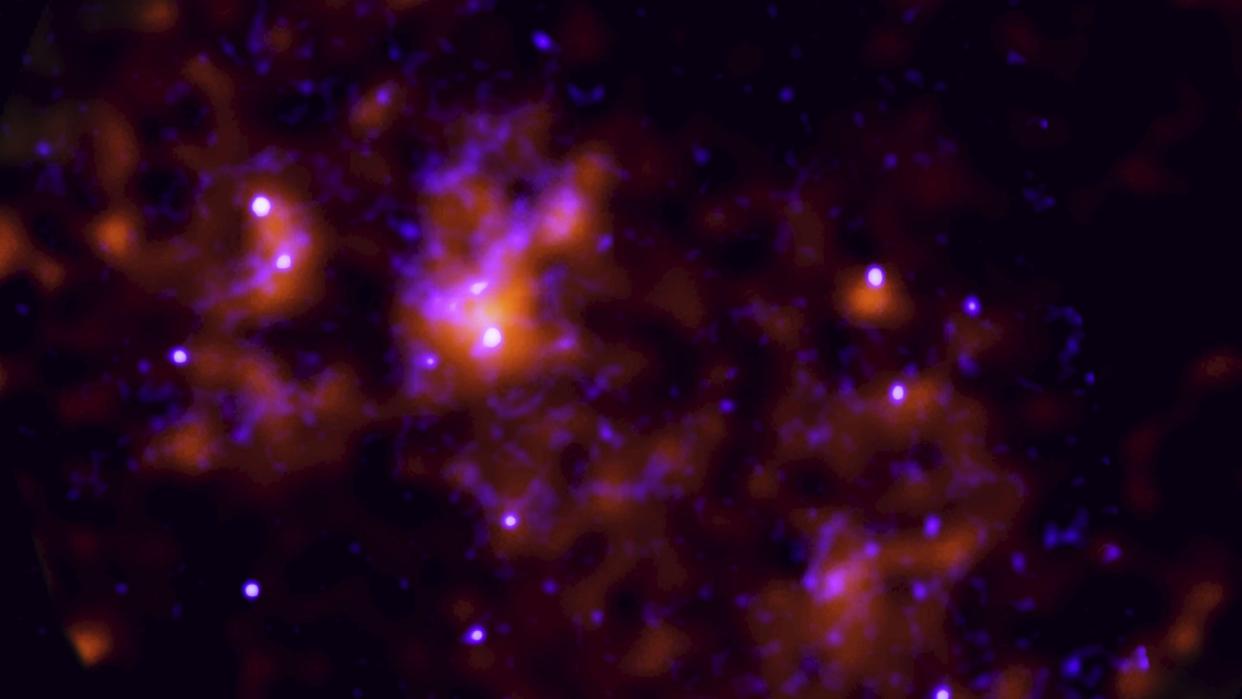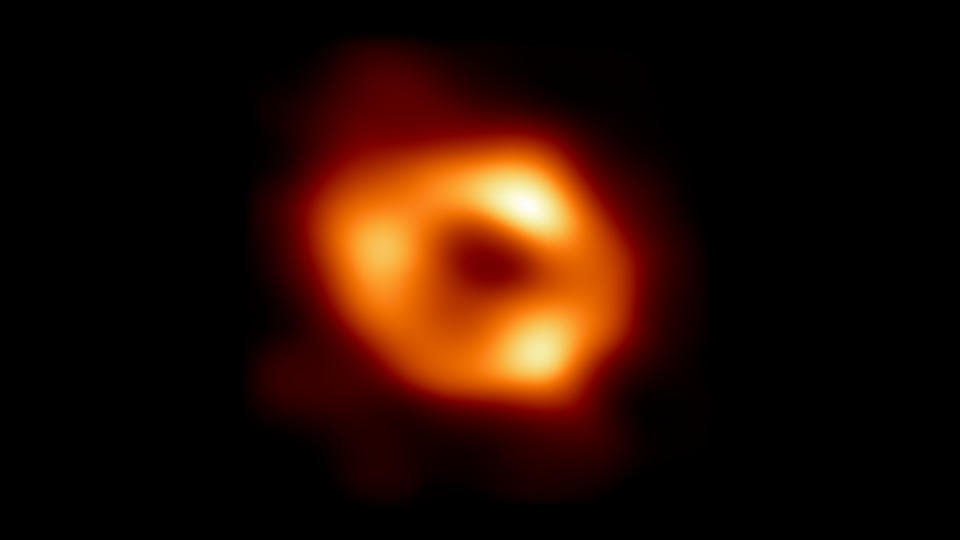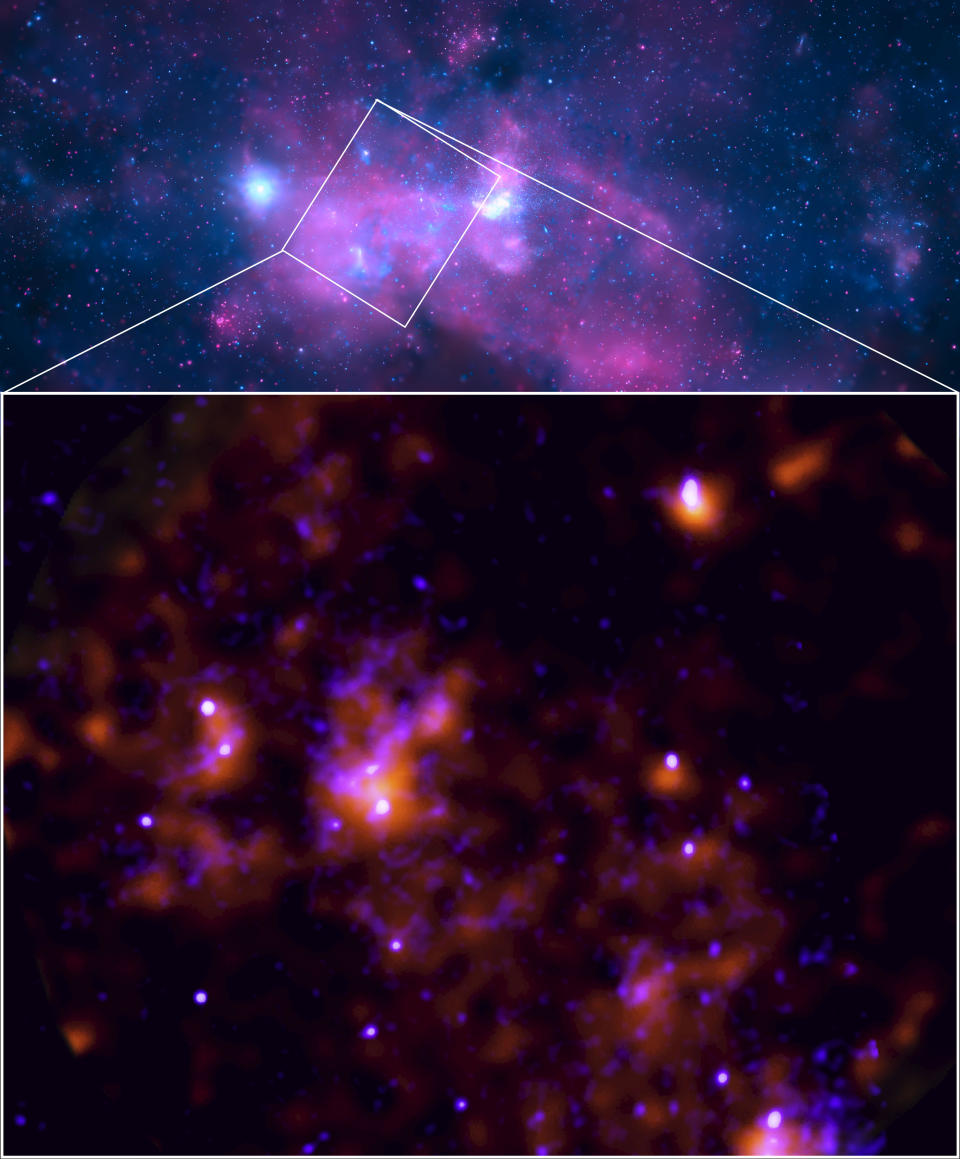The Milky Way's monster black hole let out a huge blast 200 years ago. We can now listen to its echo (video)

The supermassive black hole at the center of our Milky Way galaxy woke up and unleashed a fierce outburst of X-rays around the turn of the 19th century, according to new observations of the 'echoes' of the event.
Astronomers have noticed that immense clouds of star-forming molecular gas that inhabit the central region of the Milky Way galaxy shine brighter in X-rays than expected. One possible explanation put forward was that this X-ray light was not intrinsic to the gas clouds, but was being reflected off of them following an outburst from the black hole, which is named Sagittarius A* (Sgr A*) and has a mass 4.1 million times that of our sun.
The theory is that, sometime in the relatively recent past, the Sagittarius A* devoured something in just this fashion, and the flash of X-rays is being reflected by the molecular gas clouds in the vicinity of the black hole. Now, a team led by Frédéric Marin of the University of Strasbourg has used NASA's Imaging X-ray Polarimetry Explorer (IXPE) satellite has not only found strong evidence that this was the case, but has also been able to put an approximate date on when it happened.
Related: Sagittarius A*: The Milky Way's supermassive black hole

The gravitational tidal forces around a black hole as massive as Sagittarius A* are strong enough to rip apart anything that wanders too close in a frenzied act of violence. This process releases a flare of X-rays as a gas cloud, a star or even an asteroid is torn asunder, and the debris forms a hot disc of material that spirals into the black hole's maw.
NASA's IXPE spacecraft can measure the polarization of X-ray light from such events. Polarization refers to light waves oscillating in a preferred direction, which can reveal information about how the light has been produced and reflected. IXPE found that the X-ray echoes have a polarization angle consistent with an origin in the direction of Sagittarius A*. Furthermore, the strength of the polarization indicates that the X-rays were emitted a little over 200 years ago in an event that lasted less than a year-and-a-half.

"Our work presents the missing piece of evidence that X-rays from the giant molecular clouds are due to reflection of an intense, yet short-lived flare produced at or nearby Sgr A*," Marin's team wrote in a paper describing their findings.
The brightness of the X-ray echoes indicates that this outburst increased the black hole's X-ray luminosity a millionfold compared to its dormant state today. The total amount of energy released is estimated to be between 1039 – 1044 ergs. This is comparable with a breed of active galaxy called a Seyfert, which have supermassive black holes that feeding on large amounts of material but over a much longer period of time.
RELATED STORIES:
— The loneliest monster black holes may also be the hungriest
— Sagittarius A* in pictures: The 1st photo of the Milky Way's monster black hole explained in images
Exactly what unfortunate object fell too close to Sagittarius A* to be ripped apart remains unknown. The existence of stars that orbit very close to the black hole, and clouds of gas that pass dangerously close and are distorted by the black hole's gravity, suggest that there is a ready supply of material that will eventually fall into the black hole.
The findings were published on June 21 in the journal Nature.

